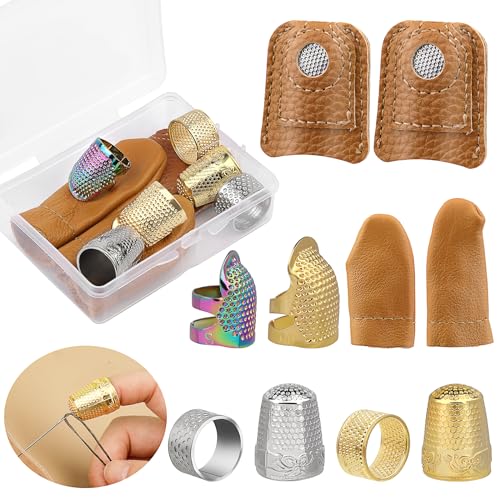Thimbles for Beginners: Are They Suitable?
Thimbles are often seen as an essential tool for sewing and quilting enthusiasts. They offer protection to the finger while pushing a needle through tough fabric. However, many beginners question whether using thimbles is necessary or even suitable for their skill level. In this article, we will explore the benefits and drawbacks of using thimbles for beginners.
The Purpose of Thimbles
Thimbles have been around for centuries and they serve a simple purpose: to protect the finger when sewing. They are usually made of metal, plastic, or leather and come in various sizes to fit different fingers. Thimbles are worn on the middle finger and used to push the needle through the fabric, preventing the needle from piercing the finger.
Benefits of Using Thimbles
For beginners, using a thimble can offer several benefits. Firstly, it provides protection against accidental pricks and injuries. Sewing can involve working with sharp needles, and accidents can happen, especially when learning new stitches or techniques.
Secondly, using a thimble allows for a more controlled and precise stitching process. The thimble acts as a guide for the needle, ensuring it goes in the right direction and at the right angle. This can help beginners achieve more even and professional-looking stitches.
Lastly, thimbles can increase comfort during prolonged sewing sessions. The constant pushing and pulling of the needle can create friction between the finger and the fabric, leading to soreness or even blisters. Thimbles provide a layer of protection, reducing discomfort and allowing for longer sewing sessions.
Drawbacks of Using Thimbles
While there are benefits to using thimbles, there are also some drawbacks, particularly for beginners. One common complaint is that thimbles can feel bulky and restrict finger movement. This can make it harder to manipulate the fabric and control needle placement, especially for individuals with smaller fingers or less dexterity.
Additionally, some beginners argue that using a thimble can impede their ability to feel the fabric and gauge the tension accurately. The padding provided by the thimble can dull the sensation of the needle going through the fabric, making it harder to determine the right amount of pressure to apply.
Another concern is the learning curve associated with using a thimble. Beginners may need time to adjust their stitching technique and get comfortable with the added tool. This can slow down their progress and potentially lead to frustration.
Thimbles and Beginner Sewers
So, are thimbles suitable for beginners? The answer ultimately depends on personal preference and comfort. Some beginners may find that using a thimble enhances their sewing experience by providing protection, control, and comfort. Others may prefer to sew without a thimble, relying on their own finger dexterity and sensitivity to achieve the desired results.
For beginners who want to try using a thimble, it is recommended to start with a lightweight and adjustable thimble to minimize any discomfort or restriction of movement. Experimenting with different materials and designs can help find the most suitable thimble for individual needs and preferences.
Ultimately, the decision to use a thimble rests with the individual. Whether a beginner or an experienced sewer, it is important to prioritize safety, comfort, and successful stitching. Thimbles can be a valuable tool in achieving these goals, but they are not necessarily essential for everyone.






